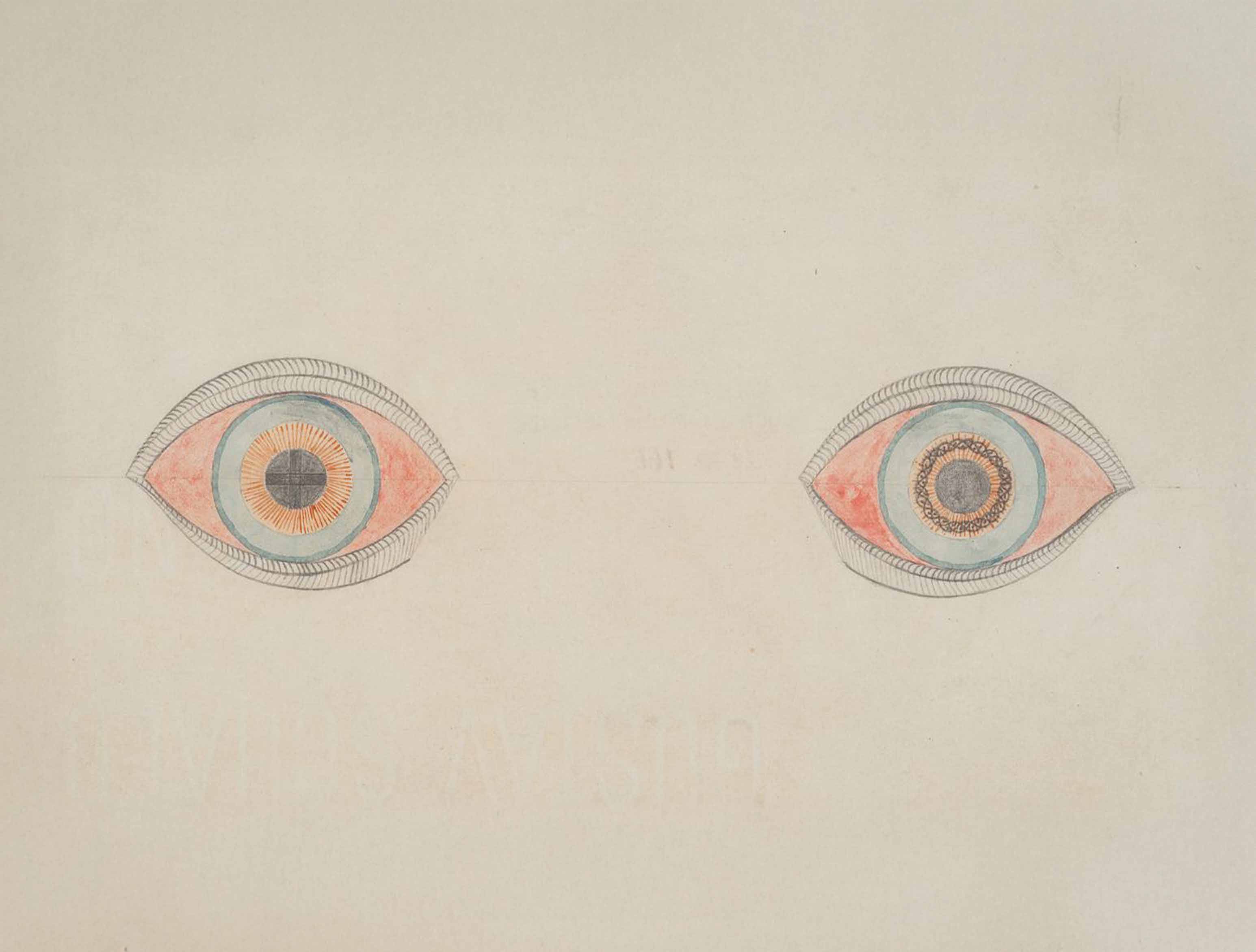
Photograph from diy-zine.com.
Delirium dissolve, by August Natterer
August Natterer, known as Neter, was an outsider artist who translated his inner visions onto paper with intense symbolism and intricate detail. Confined due to schizophrenia, Natterer’s drawings are not mere representations of reality but manifestations of a deeply personal mental landscape.
The eye & the abyss
Like silent sentinels, his images carry a weight of meaning that transcends time, inviting viewers into a world where reality and delirium intertwine. His work stands as a profound testament to the power of art to reveal unseen universes.
BIOGRAPHY
August Natterer (1868–1933), known as Neter, was a visionary who painted with his mind rather than his eyes. Institutionalized for schizophrenia, his inner world unfolded through drawings rich in symbols and invisible architectures, where every line reveals its own logic, untouched by conventional norms.
August Natterer expressed himself without words, allowing his drawings to speak on his behalf. Without voice or testimony, his works are visual echoes of hidden thoughts and emotions, where each line and symbol acts as a whisper from the depths of his mind. His art is a silent language that reveals a complex inner world—a voiceless narrative yet deeply communicative, capable of conveying the intensity of his experience beyond speech.
His work, a bridge between reality and delirium, invites us to contemplate the intangible and immerse ourselves in a deep, intimate, and enigmatic universe. Natterer did not create images; he translated visions that seemed to emerge from a silent abyss.
ARTWORK
Over 30 years, he spent time perfecting every detail, from facial expressions to body posture, creating a visual archive that seemed destined to remain hidden.
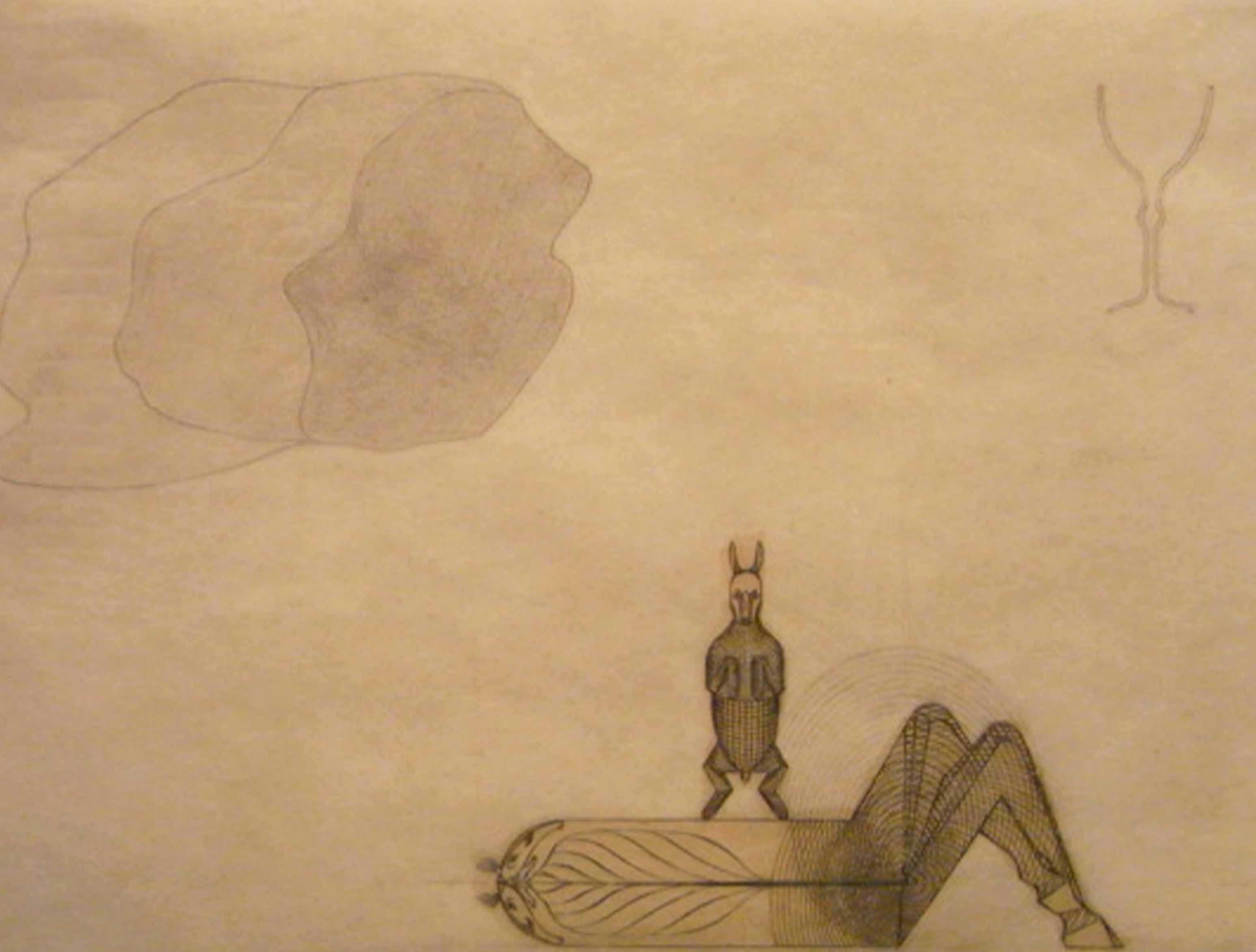
Photograph from artnet.com.
Windows to the Mind’s Abyss
His intricate compositions, filled with symbolic imagery and architectural forms, map a private universe where the boundaries between reality and delirium blur.
HERITAGE
Obsession about the eyes
Each line and shape reflects the mental landscapes shaped by his condition, making his work both deeply personal and universally haunting.
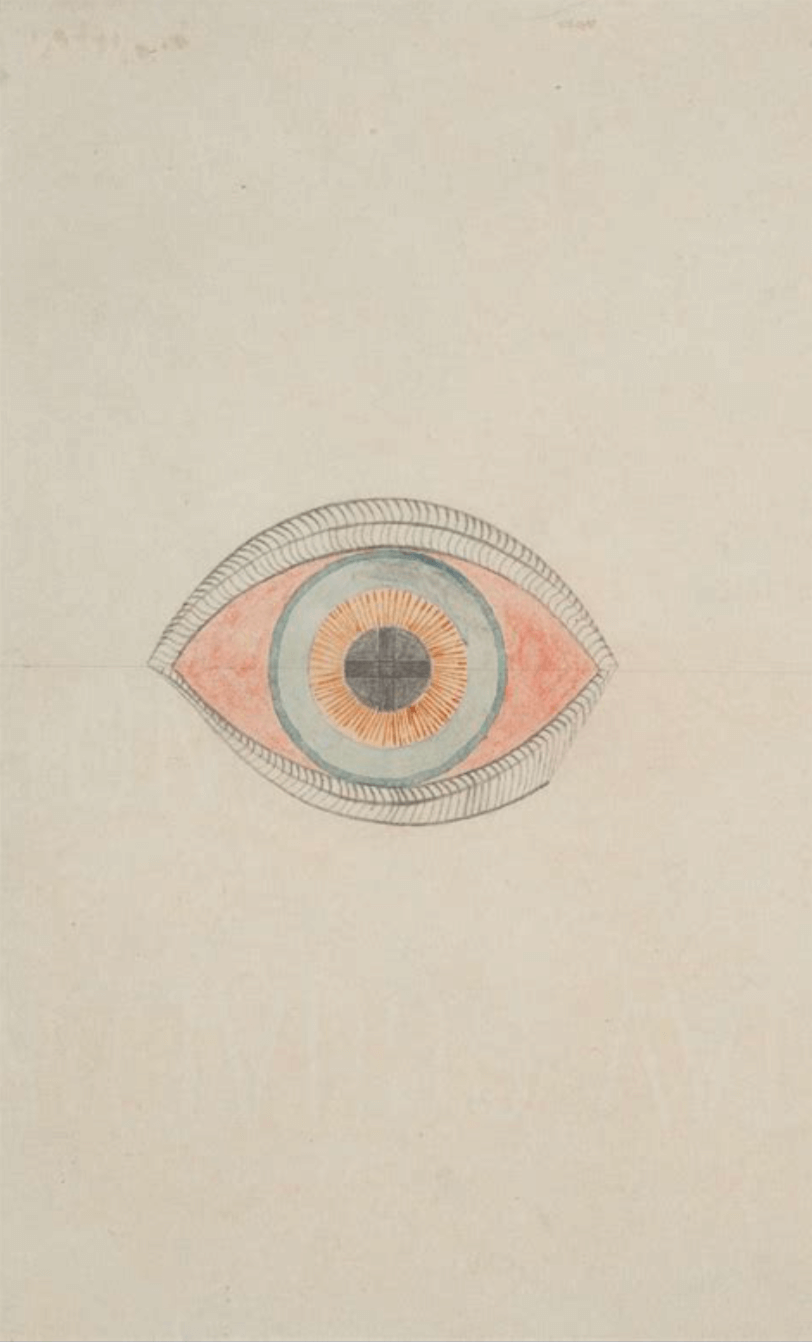
His legacy remains a cornerstone of German Art Brut, demonstrating how illness and creativity can intertwine to produce hauntingly beautiful expressions of the human psyche.
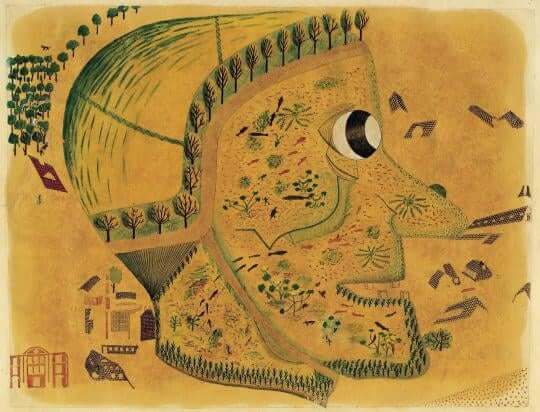
Through this repeated motif, Natterer invites us to question what it means to see and to be seen challenging the viewer to peer into the depths of human consciousness.
His legacy in Art Brut
Natterer’s art does not seek to explain or rationalise his experiences but instead invites viewers to witness the raw, unfiltered intensity of his perception.
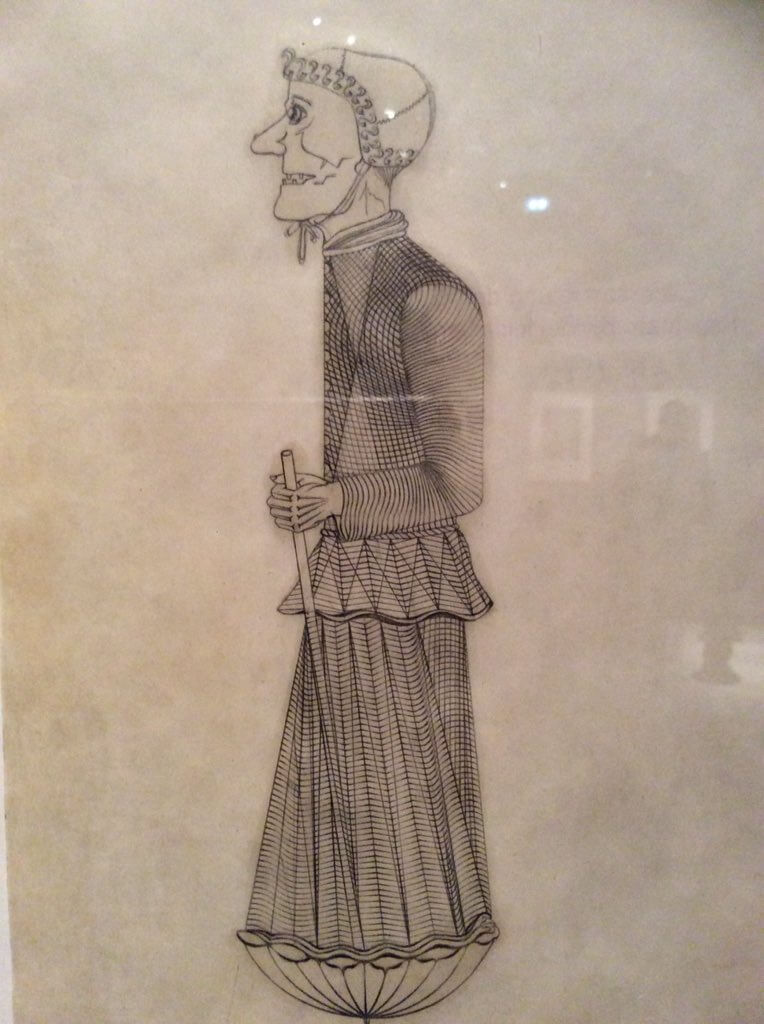
For Natterer, the eye was not just a physical organ but a powerful symbol as an entry point to inner visions and alternate realities.
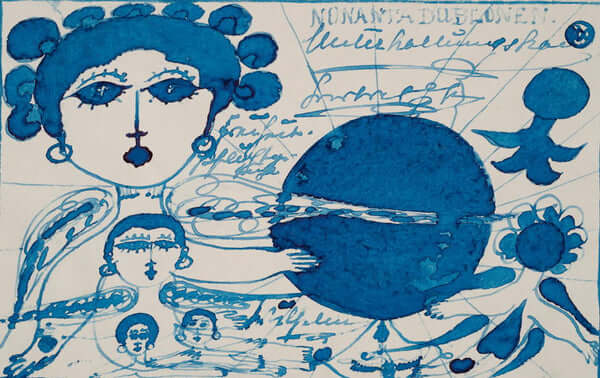
These eyes seem to watch from beyond the surface, reflecting the fractured perception of a mind in turmoil. They serve as windows into Natterer’s psyche, revealing layers of emotion, insight, and delirium. In his work, the eye becomes both observer and observed, a silent witness to the boundaries between sanity and madness.
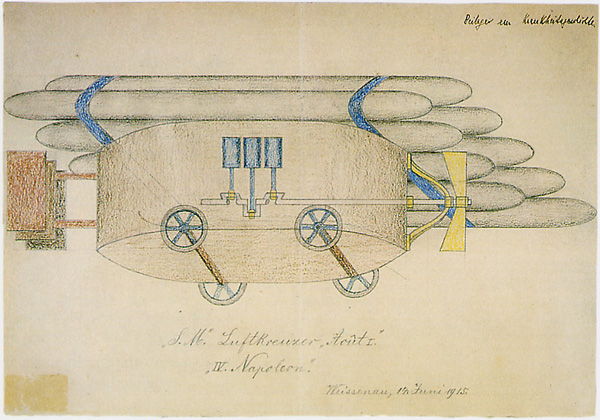
Photographs from diy-zine.com.
In Natterer’s eyes, we find not just sight, but the profound mystery of perception itself reminding us that seeing is as much about what lies within as what appears without.
upcoming ARTCASE
Unspoken, undone, by Gígja Thoroddsen
Trembling lines, figures that seem to recall something never spoken.
She drew on whatever was at hand, as if the paper, too, remembered.
Her gestures were quiet, but never timid, they carried the weight of what could not be said out loud. Her work didn’t shout, yet it never asked for silence.
It lingered in the space between memory and dream, where truth feels like a rumour.
It was intimate, raw, inevitable.
Like praying without knowing to whom and doing it anyway.

Photograph from SARPUR.is.
Share your artworks here.
MORE ARTCASES
Everyday life blurred · Miroslav Tichý
Tichy used handmade cameras and improvised materials to capture images of everyday life and the people around him.
artCASE
Encrypted and repetitive messaging · Madge Gill
She became involved with spirituality and began creating art compulsively as a means of communicating with the spiritual world.
artCASE



